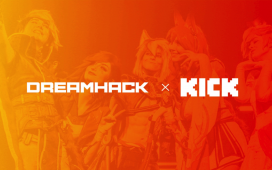
Esports companies are approaching the end of their financial runway. The industry was fueled by venture capital firms and private investors in its earliest stages. Now, these investors are expecting returns while esports companies are searching for capital to keep their operations on course.
Many have decided that the best path forward is to go public. At least 20 esports companies — excluding developers and publishers — are already listed on public stock exchanges globally.
The newest addition to that list looks to be FaZe Clan, via its looming merger with BRPM, a SPAC sponsored by an affiliate of financial services firm B. Riley Financial (NASDAQ: RILY). If all goes according to plan, the two will complete the announced merger this July.
Financial firms like B. Riley are positioned to be powerful co-captains as esports companies attempt to convince investors that profitability is in sight. Without them, the esports industry risks crashing and burning as funding runs out.
Why go public (now)?
Many fans and industry professionals have expressed scepticism about teams going public, citing substantial losses in quarterly filings. Seven of the largest public companies lost nearly $147m (~£121m) in 2021. Yet despite this turbulence, Mike Crawford, a Senior Equity Research Analyst at B. Riley Securities, still sees opportunities for esports companies to take off and soar.
Crawford’s firm, B. Riley Securities, is a subsidiary of B. Riley Financial that provides companies and investors with investment banking, sales and trading services. One of the firm’s core services is researching different stocks and providing this analysis to clients.
Esports companies are covered by B. Riley’s equity research division Discovery Group, which has been led by Crawford for over a decade. He currently covers Luminosity Gaming’s parent company Enthusiast Gaming (Toronto Stock Exchange: EGLX) and is spearheading the firm’s expanding research efforts in esports.
As an analyst, Crawford bridges the gap between esports companies and institutional investors. Without research like his, institutional investors would be flying blind into a foreign industry. In his view, it makes the most sense for esports companies to go public when profitability is on the horizon.
“The industry is maturing to the extent where companies are generating meaningful revenue and profits now or in the near future. These fast-growing enterprises can use capital to either invest in their own growth or in external growth [through M&A deals]. And one of the most efficient ways to access capital is through the public market.”

The pros of going public
Going public opens up new options as esports companies look to refuel their enterprises with an injection of new capital. One option available to public companies is selling unissued shares. Unlike private capital, which can take months to raise and has more associated costs, public markets allow companies to raise funds instantaneously.
Crawford explained that companies with public listings can use the access to the market to their advantage to raise large amounts of capital on the fly with fewer costs.
This flexibility to exchange stock for cash is referred to as liquidity. The easier it is to convert an asset — like stock in a company — into cash, the more liquid the asset is. Stock in a private company is much more difficult, if not impossible, to sell for cash versus stock in a publicly listed company.
According to financial experts, liquidity is the reason why esports companies are going public.
The ability to sell stock on the public market gives a company’s shareholders choices: they can hold their shares hoping they gain value over time, or they can sell their stock for cash. Stockholders include venture capital funds and early-stage investors, but the benefits will also extend to founders, employees, and talent who are compensated with stock.
Flight plans wanted
Institutional investors see the potential for lift-off, but they are increasingly scrutinising the flight plans. Analysts like Crawford are evaluating esports companies on their financial outlook and strategy to drive revenue growth.
“Every company needs to show how they will become profitable,” he said. “Just because a company is burning cash now, it’s not necessarily bad, especially for early-stage companies. Amazon did that for years and they seem to be doing pretty well now. But [going public] must be because a company gets to a certain tipping point where you’re mature and can actually generate cash.”
Esports alone isn’t (currently) a profitable business model — which explains why teams are exploring new ways to monetise. Organisations have branched out into everything from manufacturing their own peripherals (or acquiring such companies) to running events, creating subscription services and apps, starting educational programmes, building out content and talent agencies, doubling down on brand partnerships, and even attempting to develop their own games to achieve profitability.
Diversification has become so central that it’s reached a point where some industry analysts argue esports is not the core function of a company anymore, but a customer acquisition funnel instead. Both Crawford and Daniel Shribman, who is managing the SPAC that FaZe is set to merge with, view esports as an amplifier to a parent company’s other businesses.
Shribman told GQ earlier this month that “from a financial perspective, esports are insignificant here… What FaZe has done differently is built out a holistic media entertainment company.” Shribman will become a member of FaZe Clan’s Board of Directors, post-merger.

Risk assessment
Going public may be the way forward for esports, but the next leg of the journey comes with risks.
Public esports companies are currently losing money. Reporting these losses can create uncertainty about the future of esports for industry insiders, though institutional investors don’t necessarily view these losses in the same light.
Trained to look closely at a variety of metrics — not just the top line losses that dot industry headlines — seasoned investors seek more context. “Profitability is one of many factors, but we really focus on the operating numbers,” said Crawford.
Professional investors tend to focus on EBITDA (earnings before interest, taxes, depreciation, and amortisation) in their analyses. EBITDA is commonly used as a measure of cash flow because it excludes non-cash adjustments to revenue, making it more standardised than top line earnings. This allows investors to compare performance easily across companies.
While institutional investors are willing to consider backing unprofitable esports companies as they mature, profitability will always be the goal. Showing that revenue is growing faster than costs means companies are trending towards positive EBITDA, which is the first signal to investors that profitability is on the horizon.

However, the recent stock market sell-off could have negative consequences. Investors may shorten their timelines, become more risk averse or pivot to newer, shinier trends like Web3.
For Crawford, though, a more immediate roadblock to potential profitability is rising interest rates. When interest rates rise, capital becomes more expensive and harder to secure. A clear path towards profitability will therefore be even more critical for companies to raise new funds.
The fiscal future of esports
By July 25, 2022, we will know if FaZe Clan completes its SPAC merger, the consequences of which will ripple across the industry. Whether it goes through or not will send a clear message to investors about the state of esports businesses.
While the shareholder vote to officially approve the SPAC merger is the first hurdle, profitability is esports’ Everest. Backing from major financial institutions could give esports enough fuel to reach these heights.
B. Riley is trying to cement itself as the go-to research and financial services firm for investors interested in public esports companies. In the meantime, the firm is helping esports companies complete M&A deals and secure funding.
In April 2022, B. Riley Securities hosted a Virtual Esports Investor Day which introduced B. Riley’s clients to FaZe Clan, Enthusiast Gaming, GameSquare Esports, Super League Gaming, content agency Bent Pixels, and Cloud 9.
“We thought it would be more beneficial for investors to bring together a number of companies because they can get a wider perspective of what’s going on in the space,” Crawford said.
But the pressure is on. With their books open, esports companies need to show institutional investors that their support is building towards something self-sustaining.
Still in the pilot phase of its journey to becoming a major asset class in public markets, esports companies are still far from the tipping point of profitability. But as seen in other emerging industries, accessing capital markets early can establish a competitive edge for first movers — and that, Crawford says, is the point of being public in a disruptive industry.














